Published Jul 1, 2014
INTERVIEW: 4-Time Trek Guest Star Steve Rankin
INTERVIEW: 4-Time Trek Guest Star Steve Rankin
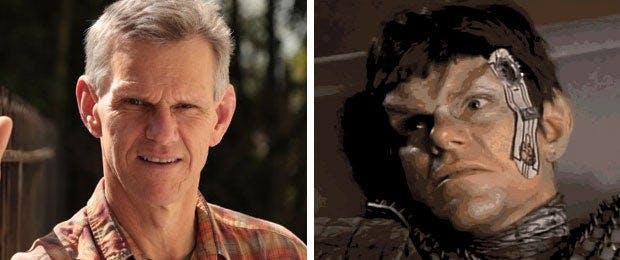

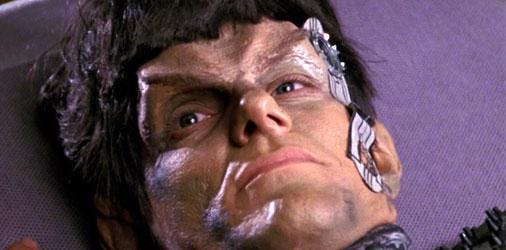
You’ve done a lot of Star Trek. How did you land your first job, as Patahk?
RANKIN: I’d just moved from New York to Los Angeles. That was 1989 and I was literally there a week and had gotten two movie parts. And then, probably about a month later, Junie Lowry Johnson cast me in Star Trek. She’d become a fan of mine from a couple of other things she’d cast me in, and so she brought me in for Star Trek. Patahk was the first thing I auditioned for, and I got it. I’d known Jonathan Frakes from being in New York for years and Gates McFadden and I had mutual friends from the theater. So it was wonderful being on that set and to work with them. A funny story: most of my scenes were in sickbay and on an exterior set of a planet. But Jonathan said, “We’re going to go to the bridge and you’re going to sit in the captain’s chair.” So we go to that set, but it’s dark in there, in this big hangar. Jonathan gets on the phone and he goes, “Hey, it’s Jonathan Frakes. Can someone give us some lights over here?” And all of a sudden, out of nowhere, some lights went on. So he said, “Sit in the chair.” I sat down in the chair – and forgive me for what I’m about to say here – and he said, “How does it feel?” I said, “It feels good.” He says, “It makes you feel like you’ve got a big d—k, doesn’t it?” I said, “Yes, it does.” (Laughs)
You then played the first-ever good Cardassian ever in the DS9 pilot. Was that an offer or did you have to audition again?
RANKIN: I auditioned. David Carson was the director and he subsequently cast me in something else, actually. I think I’d auditioned for something larger and they said, “No, but really like you and we want to put you into the pilot. Maybe you’ll come back later.” And they told me I was playing the first good Cardassian, so there was that possibility of coming back, though it didn’t happen. That makeup was the longest, the most arduous... They didn’t really have it down yet. It was a new race, relatively, that they’d been doing, so it was a looooong makeup. It was great to do, though. David Carson was great. It was very exciting to be in a pilot.
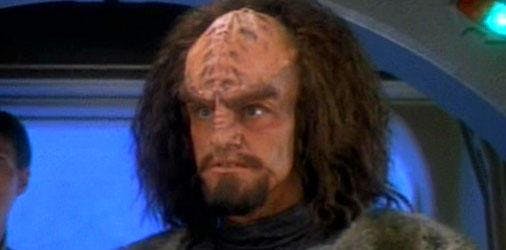
You then returned to DS9 as Yeto, a Klingon stealing a symbiont. What do you remember of that?
RANKIN: That was with me and Tim Russ, who was making his first appearance as a Klingon on DS9. John Glover was the guy who hired us to go steal the symbiont. Working with Tim was great and we became very good friends at the time. He’s a stargazer and, while we were shooting the show, he invited us to go out in the middle of the Los Angeles lake bed, which is a dried-up lake, to stargaze, because there’s no light pollution. All these telescope geeks came out of nowhere and brought various different powered telescopes to look at constellations and things. It was a really, really lovely night.
How did you enjoy playing a Klingon?
RANKIN: We had elevator shoes on in order to look incredibly tall. We were hired guns, these Klingons. We were the heavies. So it was interesting because we were scavengers. We were thugs, basically, brought in to rob something. Tim and I thought it was very, very complex, though because we were stealing this thing out of a woman’s body.
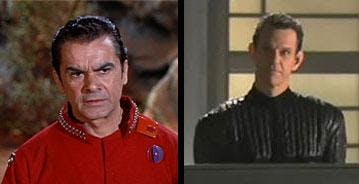
And then, near the final episode of all the Star Treks, for the Enterprise episode "Demons," you played Col. Green, a character from The Original Series…
RANKIN: The gentleman who’d played Green (Philip Pine), God rest his soul, had passed away by then. So I played Col. Green in “Demons,” and that was really cool to do. I’d been a huge Star Trek fan. I knew the original show. My parents would even sit and watch it with me. And I got to wear Green’s pointy sideburns and have that whole outfit on. That was a very, very cool thing to do, but Col. Green was one of the worst men in the universe. They made me up, got my hair dark, gave me the pointy sideburns.

Let’s bring everyone up to date. You’re in the film version of Jersey Boys…
RANKIN: Clint Eastwood directed me in that, and I had a nice little role in it. Jersey Boys is one of the greatest from-poverty-to-stardom stories in rock n roll history. They were playing for tips at the Jersey Shore and a week later they were on American Bandstand. Two weeks later they were on Ed Sullivan and, three weeks later, they had three number-one hits in a row, “Sherry” being the first one. They were hooked up to the mob, and Frankie Valli was doing petty crimes with Tommy DeVito, the guitar player from the band. He was hooked up to Gyp DeCarlo, and Gyp DeCarlo was hooked up to a guy named Bebe Rebozo, who worked in the Nixon administration. Frankie Valli did his first breaking and entering with Tommy DeVito and was called in by the cops, and so I’m the detective who pulls him in and questions with a telephone book, beating him in the head. It’s a true story. And Clint was just amazing. Eighty-two years old and just as hip and great and wonderful and low-key as you’d hope. He was nothing like you’d imagine the guy being. It was a great experience.
And you actually have a separate connection to Jersey Boys…
RANKIN: I do. I have another career as a theatrical fight director. So, I staged the fights in all of the Jersey Boys productions all over the world. So I actually played a character in the movie version of the play that I’d staged the fights for. And my being in the film is just a coincidence. I had to go in audition and read.
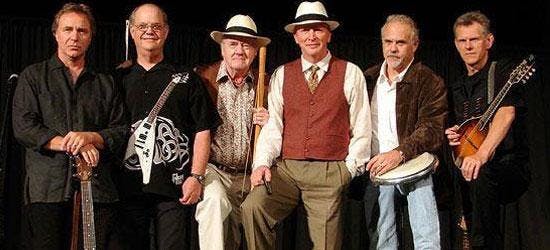
You’ll be in Vegas in a few weeks for Creation’s big event and, as part of that, you’ll be performing with the Enterprise Blues Band? How big a kick do you get out of doing that with Vaughn Armstrong, Casey Biggs and some of the other guys who often join you (including Richard Herd, Ronald B. Moore and Ethan Phillips)?
RANKIN: We just have fun. Vaughn has written songs about all of our experiences being on Star Trek, with very specific language about very stupid things that happened. This started years ago, probably 12 or 13 years ago, when Vaughn came to me and said, “I’ve got these songs I’ve been writing because I go to these conventions and I don’t know what to do.” He said, “Bob Picardo sometimes suddenly starts singing songs, and that gave me the idea to start writing songs.” So, Vaughn’s songs were very basic when we started with them. I said, “Listen, you need to the chorus here and do this…,” and so we worked for a long time on the early songs that he wrote. Then he got the hang of it. Once we added Casey, we really were able to do a range on some of the tunes and focus on how to do it. So the three of us are the core. Casey has written a couple of tunes and I’ve brought in a couple of songs that are not Star Trek songs, but that seem to fit in with what we’re doing. It’s just a blast. We have a good time. We laugh, we sing, and it’s great to be able to share it with the fans.
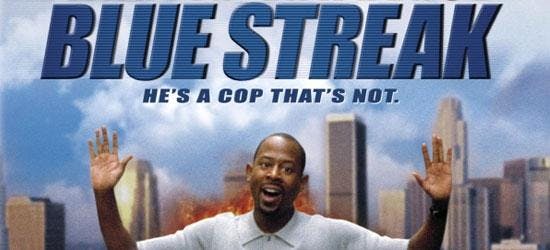
Last question. You’re walking down the street and someone recognizes you. Which of your credits are they most likely to reference?
RANKIN: If I’m at a sci-fi convention, it’s one of my Star Treks or The X-Files and also Ray Butts from Space: Above and Beyond. If I’m walking down the street, the average non-Star Trek person always seems to remember from this movie I did called Blue Streak, which was with Martin Lawrence. That movie seems to run all the time on television, so it is in people’s consciousness. People come up to me and go, “Blue Streak!” It’s great to be recognized for that because it was my first major role in a motion picture. Not a bad thing to be recognized for.
Visit www.Creationent.com for details about the upcoming Creation Entertainment Official Star Trek Convention in Las Vegas.

